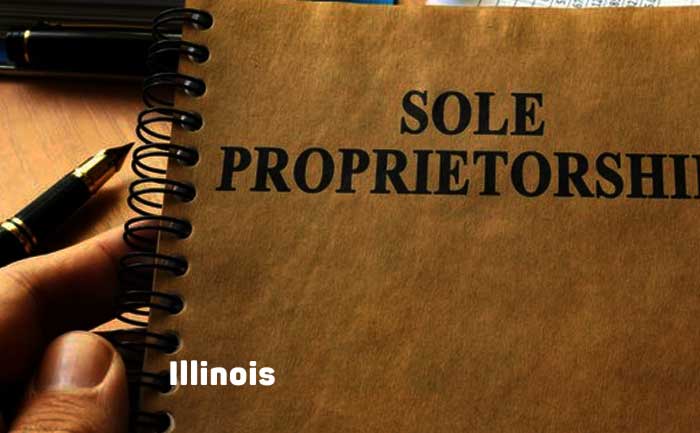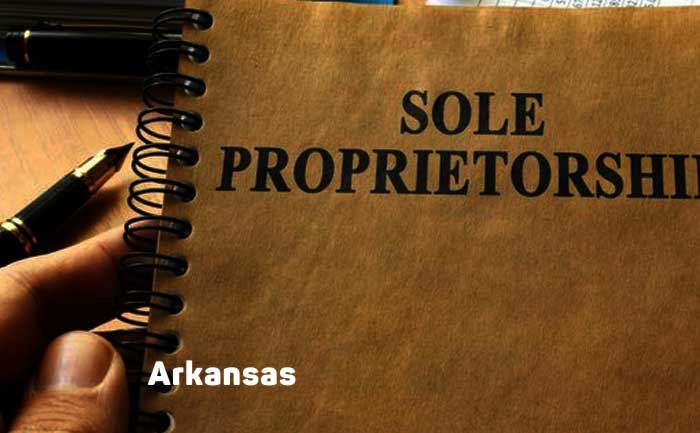If you are looking to start a new business in Connecticut and planning to be the sole owner of your business, you might be interested in becoming a sole proprietor.
So, in case you are currently self-employed in Connecticut and interested in entering the one-person business world, a sole proprietorship might be a good choice for you.
Not from Connecticut? Learn to become a Sole Proprietor in any other State.
Point to Ponder! A sole proprietorship is not a formal/legal business entity like an LLC (Limited Liability Company) or a corporation. And there is no personal asset protection against any liability in the case of a sole proprietorship. Therefore we recommend forming an LLC, the most popular entity for small businesses. You can form an LLC by yourself or hire a service like Zenbusiness, to let them get the paperwork done for you.
A sole proprietorship is the most straightforward and easiest business model in the United States of America. Like every other state, in Connecticut too, you do not need to file any legal document with the state government of Connecticut to establish a one-person business also known as a sole proprietorship. Hence, a sole proprietorship is not a legal business entity like LLC (Limited Liability Company) or a corporation.
A sole proprietorship is the simplest and relatively an old business model in the USA. Although there is no formal set up process required in a sole proprietorship, yet there are few steps to follow that many sole proprietors find in their best interest. Moreover, operating as a sole owner and administrator does not mean there are no rules and regulations for a sole proprietor to follow. In this guide, we will cover all the requisites and legalities needed to form a sole proprietorship in the state of Connecticut.
Become a Connecticut Sole Proprietor | Step Wise Guide
Luckily! There is no setup fee and you would not face too much hassle while starting a sole proprietorship in comparison to the legalities and paperwork that people face in other business structures. To have a sole proprietorship in Connecticut, you simply have to follow a few simple steps to keep things smooth. Here are five easy steps you need to follow to become Connecticut sole proprietorship.
- Select an appropriate business name
- File for DBA (Doing Business As) name
- Obtain EIN (Employer Identification Number
- Enlist Taxation Requirements
- Obtain business permits, licenses, and zone clearance
#1: Select an Appropriate Business Name
A sole proprietor in Connecticut can use his/her own given name or may opt for a trade or assumed business name. However, a tradename sounds more professional than the owner’s personal name. DBA (Doing Business As) name plays a pivotal part if you prefer to choose an assumed business name.
The state law requires the DBA must be distinguishable from the companies/businesses that are already on record. Moreover, keeping the common and federal laws of trademark protection in mind, it is wise to avoid a name that is too similar to another registered business. Check the following government databases to make sure your fictitious or DBA name has not been trademarked already.
- Connecticut Secretary of State
- The United States Patent and Trademark Office (USPTO)
File for DBA (Doing Business As) Name
Connecticut has no legal requirement for registering a DBA name. However sole proprietors prefer to register their DBA since the registered business name seems trustworthy and customers feel more comfortable in doing business with such companies.
You can register your DBA with the state using the online facility of Connecticut Secretory of State. You also need to file a paper registration in the county where you plan to do business. Most commonly this is done by publishing your DBA and provide the proof of publication to local government.
#3: Obtain EIN (Employer Identification Number)
Usually, a sole proprietor without any employee does not need any federal tax ID or EIN. Such proprietors use their social security number (SSN) for things EIN is used for. But most of the sole proprietors, for privacy reasons, do not use their SSN and get an EIN. Additionally, some banks may require an EIN to open a bank account and EIN also reduces the risk of identity theft. If a sole proprietor wishes to have employees, he/she needs to obtain an EIN.
EIN is a 9-digit number issued by Internal Revenue Service (IRS) for tax reporting. Every business having employees needs to report wages and various employee reports to the IRS through EIN. You can get an EIN online on the IRS website.
#4: Enlist Taxation Requirements
Which taxes apply to you as a sole proprietor is determined by the nature of your business. State and local tax both apply to a sole proprietor. Commonly state tax includes sales and use tax. Depending upon the nature of your business some additional taxes may also apply to you such as franchise tax, excise tax, lodging tax etc.
To determine your state-level tax, you need to visit the business tax section of the Connecticut Department of Revenue website. Local taxes may also apply to your business depending upon its location. Go through the My Connecticut Taxes section of Connecticut Department of Revenue website, you will be signed up for relevant state tax automatically. Also, visit the websites of your local government to make sure you fulfil all the tax requirements.
#5: Obtain Business Permits, Licenses, and Zone Clearance
Connecticut does not require a general business license by a sole proprietor but depending on the nature of the business activity you may need to acquire a business license to work in a compliant manner. Which state-level license your business will be needing depends upon the services or goods you offer as a sole proprietor. Business & License Tax section of the Connecticut Department of Revenue website provides comprehensive information regarding the occupation or profession that require a state license.
Additionally, local regulations such as building permit, license, zone clearance etc may apply to your business. You need to check the license requirements of the county in which you intend to operate as a sole proprietor.
Moreover, a sole proprietor with taxable sales greater than $10,000 must obtain a standard business license from the local county clerk. In case your sales are less than $10,000. You may still need to get a minimal activity license from the local county office. Connecticut Department of Revenue website, Registration, and Licensing section provides in-depth information on such licenses.
After You Establish a Sole Proprietorship
Once you have established a sole proprietorship in Connecticut, following are the important things you need to do to keep your business running streamline.
- Set up a business bank account
- Obtain general liability insurance
- Report and pay taxes
Set up a business bank account
Using your DBA name and EIN you should get a business bank account to keep your personal and business finances separate to avoid any confusion. Moreover, having a business bank account sounds more professional and safer to customers.
Obtain general liability insurance
Unlike LLC, sole proprietors are personally liable for all business obligations and debts, obtaining general liability insurance may be the only way to protect yourself against unforeseen circumstances.
Report and pay taxes
Depending upon the particular business activity, you need to be vigilant in paying all the taxes that you are supposed to pay. In addition to that, you must keep track, and record of your taxes.
Things you must know before opting sole proprietorship as your business model
Before starting your business as a sole proprietor, the following are a few important things you must keep in your mind.
No discrimination in personal and business assets
A sole proprietor can claim any profit or loss on his personal tax returns since there is no difference between the owner itself and the business. Moreover, a sole proprietor can comingle his/her personal and business assets as much as he/she wants. Sometimes it becomes difficult to manage the business and personal expenses and withdrawals from the same account.
The owner can write check using his personal name and the same customer can write checks to business using sole proprietor’s name. In more formal businesses such as LLC and corporation, owners are required to keep their personal assets separate from those of the company.
No protection of private assets during unforeseen circumstances
The drawback of this aspect is in case a sole proprietor’s business in sued the creditors are free to pursue the personals assets like bank accounts, personal vehicle, and home of the sole proprietor. In the case of LLCs and corporations, creditors are only limited to business assets.
Vigilance in issues of taxes and license issues
When it comes to filing license or permits request, dealing tax issues or even the name of your sole proprietorship you are required to be very vigilant and make sure nothing is overlooked. You need to protect yourself from identity theft and there is less room for mistakes at the business place as your personal and business assets both are at stake.
Final Word
Every business model has some pros and cons. You need to think carefully before selecting any mode of business and carefully follow the requisites of that particular model. We hope this article helped in getting insight and answered your quarries related to sole proprietorship formation. You can visit our guide to small business models before making a final decision.

Alfie Wilson, Esq., is a legal content writer with expertise in business formation, criminal law, veterans disability, family law, DUI law, personal injury, animal welfare, and legal writing. He holds a J.D. from Emory University School of Law and has experience in appellate advocacy and regulatory matters. Alfie’s passion lies in breaking down complex legal topics for a non-lawyer audience. He currently writes for law firms and non-profits on various issues and resides in Arlington, Virginia.



